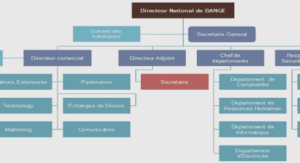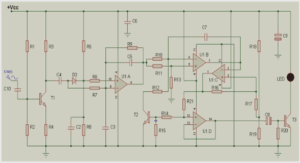Numerical discretization
Discretized function spaces
The exterior problem (D.8) is solved numerically with the boundary element method by employing a Galerkin scheme on the variational formulation of an integral equation. We use on the boundary surface Γ Lagrange finite elements of type either P1 or P0. The surface Γ is approximated by the triangular mesh Γ h , composed by T flat triangles Tj , for 1 ≤ j ≤ T, and I nodes ri ∈ R 3 , 1 ≤ i ≤ I. The triangles have a diameter less or equal than h, and their vertices or corners The function space H1/2 (Γ) is approximated using the conformal space of continuous piecewise linear polynomials with complex coefficients Qh = ϕh ∈ C 0 (Γh ) : ϕh|Tj ∈ P1(C), 1 ≤ j ≤ T . (D.189) The space Qh has a finite dimension I, and we describe it using the standard base functions for finite elements of type P1, denoted by {χj} I j=1 and illustrated in Figure D.6. The base function χj is associated with the node rj and has its support supp χj on the triangles that have rj as one of their vertices. On rj it has a value of one and on the opposed edges of the triangles its value is zero, being linearly interpolated in between and zero otherwise.
Discretized integral equations
First extension by zero
To see how the boundary element method operates, we apply it to the first integral equation of the extension-by-zero alternative, i.e., to the variational formulation (D.183). We characterize all the discrete approximations by the index h, including also the impedance and the boundary layer potentials. The numerical approximation of (D.183) leads to the discretized problem that searches µh ∈ Qh such that ∀ϕh ∈ Qh.By proceeding in the same way, the discretization of all the other alternatives of integral equations can be also expressed as a linear matrix system like (D.198). The resulting matrix M is in general complex, full, non-symmetric, and with dimensions I × I for elements of type P1 and T × T for elements of type P0. The right-hand side vector b is complex and of size either I or T. The boundary element calculations required to compute numerically the elements of M and b have to be performed carefully, since the integrals that appear become singular when the involved triangles are coincident, or when they have a common vertex or edge, due the singularity of the Green’s function at its source point.
Boundary element calculations D
Geometry
The boundary element calculations build the elements of the matrix M resulting from the discretization of the integral equation, i.e., from (D.198) or (D.208). They permit thus to compute numerically expressions like (D.199). To evaluate the appearing singular integrals, we use the semi-numerical methods described in the report of Bendali & Devys (1986). We consider the elemental interactions between two triangles TK and TL of a mesh Γ h . The unit normal points always inwards of the domain encompassed by the mesh Γ h . We denote the triangles more simply just as K = TK and L = TL. As depicted in Figure D.8, the following notation is used: • |K| denotes the area of triangle K. • |L| denotes the area of triangle L. • r K 1 , r K 2 , r K 3 denote the ordered vertices or corners of triangle K. • r L 1 , r L 2 , r L 3 denote the ordered vertices or corners of triangle L. • nK, nL denote the unit normals of triangles K and L (oriented with the vertices). The vertices of the triangles are obtained by renumbering locally the nodes ri , 1 ≤ i ≤ I. Furthermore, as shown in Figure D.9, we also use the notation: • h K 1 , hK 2 , hK 3 denote the heights of triangle K. • h L 1 , hL 2 , hL 3 denote the heights of triangle L. • τ K 1 , τ K 2 , τ K 3 denote the unit edge tangents of triangle K.
Numerical integration for the non-singular integrals
For the numerical integration of the non-singular integrals of the boundary element calculations we use three-point and six-point Gauss-Lobatto quadrature formulae (cf., e.g. Cowper 1973, Dunavant 1985). We describe the triangles K and L by means of barycentric coordinates as done in (D.235) and (D.236).





